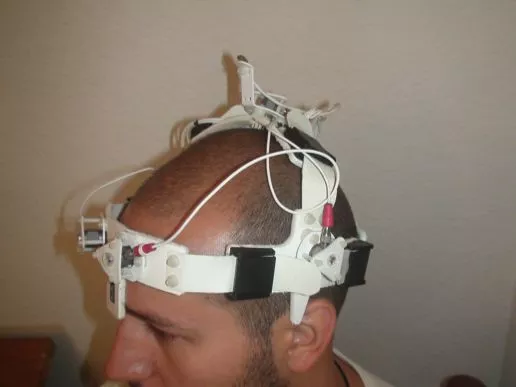A team of radiologists and retired US Navy sonar experts have used technology developed for submarines as the basis for a new device which offers quick detection, diagnosis and monitoring of stroke. Combined with a portable laptop based console, the head-worn device enables different types of stroke and brain injury to be discovered and located, differentiating normal blood flow from life threatening conditions and delivering an initial diagnosis in under a couple of minutes.
Stroke is the third leading cause of death in the United States and the leading cause of disability. Strokes occur when a blood clot impedes or a blood vessel ruptures interrupting blood flow to an area of the brain.
"Time to diagnosis is critical to improving patient outcomes; time is brain," stresses Kieran J. Murphy, M.D., FSIR, director of research and deputy chief of radiology at the University of Toronto and University Health Network, Toronto, Canada.
The device uses an array of sensors to measure blood flow in the brain. Each brain pulse produces a pressure wave emanating from the blood vessel outwards in all directions. When the wave encounters the skull, the wave accelerates. The device measures this acceleration and registers the complex waveform with a time synchronized high resolution digitizer all in the manner of a couple of minutes.
"As sonar sorts out whales and other objects from vessels, the device sorts out cerebral abnormalities such as aneurysms, arteriovenous malformations (AVMs, an abnormal connection between veins and arteries), ischemic strokes and traumatic brain injury from normal variations in physiology", Murphy explains.
A proof of principle trial involving 16 men and 24 women with a wide range of brain conditions has been conducted using the device. Each patient was given a CT magnetic resonance scan or catheter angiograph to verify their diagnosis and the analysis team not briefed on the patient's clinical medical history. Using data taken from the device on 30 normal subjects the team were able to separate normal from all other conditions, sort patients into specific conditions and provide information about the location of the abnormality. As the radiologists continue to add to their signature library, the ability to locate and detect other neurological conditions will continue to expand.







